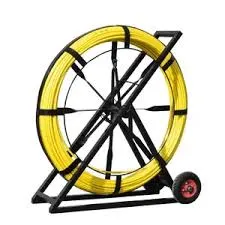
-
 Afrikaans
Afrikaans -
 Albanian
Albanian -
 Amharic
Amharic -
 Arabic
Arabic -
 Armenian
Armenian -
 Azerbaijani
Azerbaijani -
 Basque
Basque -
 Belarusian
Belarusian -
 Bengali
Bengali -
 Bosnian
Bosnian -
 Bulgarian
Bulgarian -
 Catalan
Catalan -
 Cebuano
Cebuano -
 Corsican
Corsican -
 Croatian
Croatian -
 Czech
Czech -
 Danish
Danish -
 Dutch
Dutch -
 English
English -
 Esperanto
Esperanto -
 Estonian
Estonian -
 Finnish
Finnish -
 French
French -
 Frisian
Frisian -
 Galician
Galician -
 Georgian
Georgian -
 German
German -
 Greek
Greek -
 Gujarati
Gujarati -
 Haitian Creole
Haitian Creole -
 hausa
hausa -
 hawaiian
hawaiian -
 Hebrew
Hebrew -
 Hindi
Hindi -
 Miao
Miao -
 Hungarian
Hungarian -
 Icelandic
Icelandic -
 igbo
igbo -
 Indonesian
Indonesian -
 irish
irish -
 Italian
Italian -
 Japanese
Japanese -
 Javanese
Javanese -
 Kannada
Kannada -
 kazakh
kazakh -
 Khmer
Khmer -
 Rwandese
Rwandese -
 Korean
Korean -
 Kurdish
Kurdish -
 Kyrgyz
Kyrgyz -
 Lao
Lao -
 Latin
Latin -
 Latvian
Latvian -
 Lithuanian
Lithuanian -
 Luxembourgish
Luxembourgish -
 Macedonian
Macedonian -
 Malgashi
Malgashi -
 Malay
Malay -
 Malayalam
Malayalam -
 Maltese
Maltese -
 Maori
Maori -
 Marathi
Marathi -
 Mongolian
Mongolian -
 Myanmar
Myanmar -
 Nepali
Nepali -
 Norwegian
Norwegian -
 Norwegian
Norwegian -
 Occitan
Occitan -
 Pashto
Pashto -
 Persian
Persian -
 Polish
Polish -
 Portuguese
Portuguese -
 Punjabi
Punjabi -
 Romanian
Romanian -
 Russian
Russian -
 Samoan
Samoan -
 Scottish Gaelic
Scottish Gaelic -
 Serbian
Serbian -
 Sesotho
Sesotho -
 Shona
Shona -
 Sindhi
Sindhi -
 Sinhala
Sinhala -
 Slovak
Slovak -
 Slovenian
Slovenian -
 Somali
Somali -
 Spanish
Spanish -
 Sundanese
Sundanese -
 Swahili
Swahili -
 Swedish
Swedish -
 Tagalog
Tagalog -
 Tajik
Tajik -
 Tamil
Tamil -
 Tatar
Tatar -
 Telugu
Telugu -
 Thai
Thai -
 Turkish
Turkish -
 Turkmen
Turkmen -
 Ukrainian
Ukrainian -
 Urdu
Urdu -
 Uighur
Uighur -
 Uzbek
Uzbek -
 Vietnamese
Vietnamese -
 Welsh
Welsh -
 Bantu
Bantu -
 Yiddish
Yiddish -
 Yoruba
Yoruba -
 Zulu
Zulu


Oct . 31, 2024 14:42 Back to list
Understanding the Benefits and Use of Wire Cord Grips in Various Applications
Understanding Wire Cord Grips An Essential Component in Electrical Connections
Wire cord grips are vital components in the field of electrical engineering and maintenance, providing a secure and efficient solution for connecting electrical wires to various devices and outlets. These grips, also known as cable grips, serve multiple functions that enhance safety and performance in electrical applications.
At its core, a wire cord grip is designed to hold the wire securely in place, preventing it from being pulled out or subjected to undue stress. This is particularly important in environments where cables are frequently moved or adjusted. By maintaining a firm grip on the cord, these devices help to prevent accidental disconnections that could lead to equipment failures or safety hazards.
One of the primary benefits of wire cord grips is their ability to protect electrical connections from strain. Many of us may have experienced the frustration of a cable that has become worn or frayed over time, often due to constant movement or bending at the point of connection. The use of a wire cord grip mitigates this risk by anchoring the cable firmly, relieving tension at vulnerable points. This ensures that the internal wires remain intact and reduces the likelihood of electrical shorts, interruptions in service, or even fire hazards.
Wire cord grips come in various designs and sizes to accommodate different types of cables and applications. For example, some grips are equipped with strain relief features that allow them to absorb movement without transferring stress to the wire. Others may be designed for heavy-duty applications, providing robust support for larger cables used in industrial settings. The choice of grip often depends on the specific use case, as well as the environment in which the cable will operate.
wire cord grip

Installation of wire cord grips is typically straightforward, allowing for quick integration into existing systems
. Most grips are made of durable materials such as rubber, plastic, or metal, enhancing their resistance to wear and environmental factors such as moisture, heat, and corrosive substances. This resilience makes them suitable for a wide range of applications, from outdoor power supplies to indoor equipment.In addition to their protective functions, wire cord grips can also enhance the aesthetic appeal of an installation. Neatly managing and securing cables not only improves safety but also contributes to a cleaner and more organized appearance. This is particularly important in commercial and residential settings where visual impression matters.
It's important to note that proper selection and installation of wire cord grips are crucial for optimal performance. Operators should consider the gauge of the wire, the weight it must support, and the environmental conditions it will face. Regular inspections are also recommended to ensure that grips remain intact and functional, particularly in high-traffic or demanding applications.
In conclusion, wire cord grips play a significant role in maintaining the integrity and safety of electrical connections. They provide essential strain relief, protect against physical damage, and contribute to a more organized setup. As technology advances and the demand for reliable electrical systems continues to grow, the importance of wire cord grips remains undisputed. Their simple yet effective design is a testament to the importance of safeguarding our electrical infrastructure, ensuring that we can rely on our devices and systems without fear of disconnection or failure.
Latest news
What Are Construction Tools and How Are They Used?
NewsJul.11,2025
Professional-Grade Duct Rodding Tools for Superior Cable Installation
NewsJul.11,2025
Enhancing Safety and Efficiency with Modern Hot Stick Solutions
NewsJul.11,2025
Empowering Cable Installation with Advanced Rodder Solutions
NewsJul.11,2025
Elevate Your Cable Installation Projects with Cable Pulling Tools
NewsJul.11,2025
Efficient Cable Handling Solutions: Cable Rollers for Sale
NewsJul.11,2025











